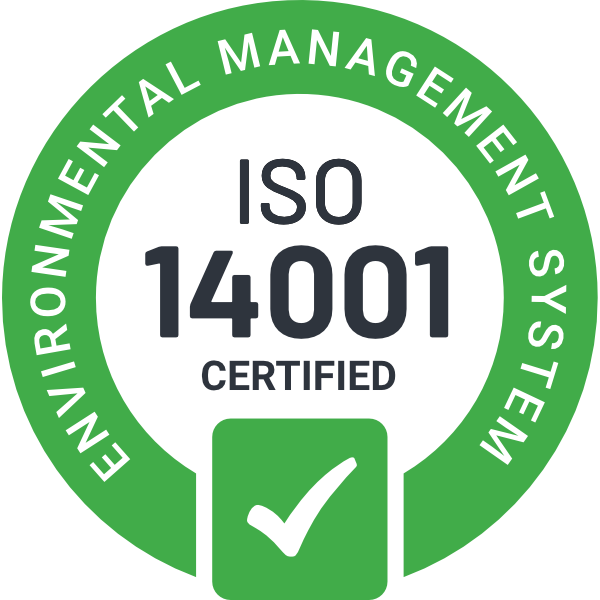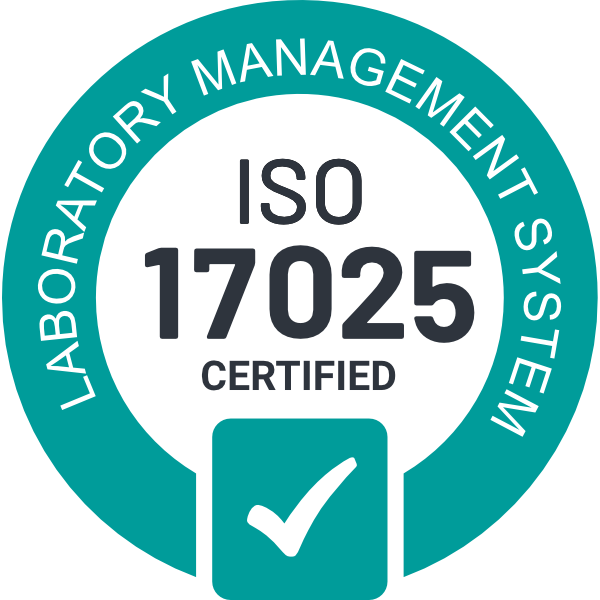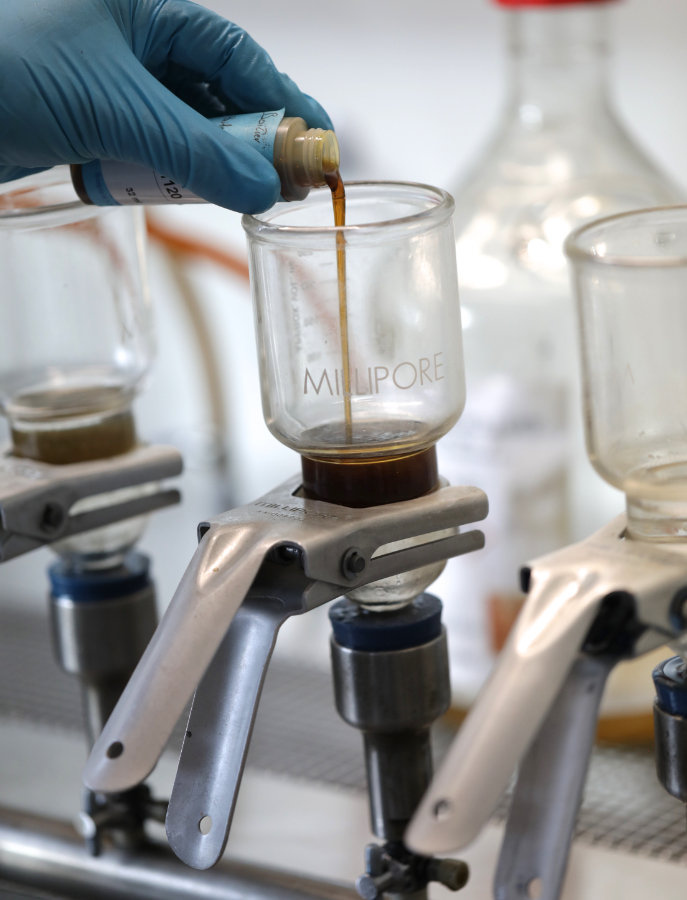Graphited grease analysis
Like oil, industrial grease allows lubrication of machines and mechanical equipment to prevent deterioration of their condition. There are different types of grease:
- High temperature
- Extreme/heavy duty
- Water-resistant
- Multi-purpose
Each type of grease has characteristics and properties that vary depending on their uses and applications. Eurofins IESPM provides an overview of two types of grease, used in extreme conditions (high temperature, low temperature, high pressure), which require monitoring through appropriate analysis as part of preventive maintenance operations for equipment. These are graphite grease and molybdenum disulfide grease.
What is graphite grease?
Graphite grease is a type of grease to which an insoluble graphite-based additive is added (flakes for sealing or micronized powder for high mechanical friction). It improves the friction characteristics between metal surfaces and is therefore used for high-pressure applications (mechanical parts and bearings subjected to high pressures, shocks, etc.). It is also a grease that withstands extreme temperatures.
It is used on:
- Pivot axes of suspension arms
- Gear pinions on toothed crowns
- Construction machinery working in unfavorable conditions (e.g., concrete mixer)
- gears
- ball joints
- joints…
What are we analyzing?
Like any lubricant, graphite grease degrades over time. Analyzing graphite grease in situ in rotating equipment allows determining its condition and checking the internal wear of the lubricated component. Implementing a monitoring system through analysis is particularly recommended due to the specificity of this grease.
Indeed, visually tracking the degradation of this type of grease is much more difficult due to its dark original color, its composition, and the natural presence of graphite. That’s why particular attention will be given by the laboratory by conducting more specific tests:
Analyses and Checked Points
THE CHARACTERISTICS OF GREASES
- Base oil viscosity
- Acid Number (AN)
- Dropping Point
- Consistency (NLGI grade)
- Anti-wear, extreme pressure properties
- ICP Spectrometry
- …
POLLUTION
- Insolubles (sands, dust, metal wear particles)
- Water
- Contamination by another grease
- ICP Spectrometry
- …
WEAR
- Ferrometry
- Scanning Electron Microscopy Analysis
- ICP Spectrometry
- Particle Quantifier (PQ)
- …
Our Quality Assurance



Equipment, Sampling Techniques, and Results Interpretation
In the context of regular maintenance programs, Eurofins IESPM provides you with grease analysis for your equipment.
- A plastic jar of 100ml
- Two tracking labels
- A mailing envelope
It is essential that the sample taken be representative of the entire grease load in contact with the monitored wear couple. The sampling of industrial grease is a delicate operation: access to the sampling point is often difficult (mechanical constraints, environmental conditions, etc.) and due to its consistency, the grease is sometimes available only in small quantities.
In some cases, given the technology of mechanical components, multiple samples may be necessary to obtain a fully representative picture. We strongly advise you to seek assistance from professionals like Eurofins IESPM to determine the best approach and to study case by case the appropriate sampling methods.
Once the sampling is done, you need to fill in the technical information regarding your sample. You can check out our dedicated article for tips on how to register a sample: Go to the page.
Before sending, remember to:
- Clean the container carefully to remove any traces of grease.
- Stick one of the two labels provided in the kit onto the container.
"Expert Advice:
The grease sampling process requires special attention. Remember to undergo training.
Don't forget to send us a sample of new grease for reference."
You have just received the diagnosis of the analyses carried out in the laboratory.
This provides you with detailed and reliable information about the condition of the grease and the level of wear on your equipment. Following these results, we offer personalized recommendations to assist you in the condition-based maintenance of your mechanical equipment.
EXAMPLE OF DIAGNOSTIC
Grease analysis

Discover an example of diagnosis for grease analysis.
SPECIAL REPORT
On our grease analysis
Grease is a lubricant present in many applications: rolling stock or industrial equipment. It has an essential function in the operation…
VIDEOS
The interest of analytical monitoring
Discover in video how implementing regular monitoring of the greases in service in your equipment contributes to increasing their longevity.


